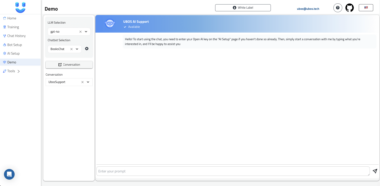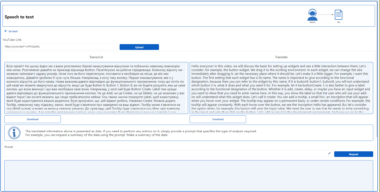MCP Proxy: Revolutionizing Server Connectivity in AI Systems
In the rapidly evolving landscape of AI and machine learning, seamless data exchange and communication between servers is paramount. The MCP Proxy, a pivotal tool offered by UBOS, addresses this need by enabling efficient connectivity between SSE (Server-Sent Events) and stdio servers. This overview delves into the intricacies of the MCP Proxy, its use cases, key features, and how it integrates with the UBOS platform.
Understanding MCP Proxy
The MCP Proxy is a versatile tool designed to facilitate communication between different server transports. It operates in two primary modes:
Stdio to SSE: This mode allows a proxy server to connect from stdio to a remote SSE server. It is particularly useful for clients like Claude Desktop that require SSE connectivity, which is not natively supported.
SSE to stdio: In this mode, the MCP Proxy exposes an SSE server that connects to a local stdio server, enabling remote connections to the local server.
Key Features
- Versatile Configuration: The MCP Proxy supports comprehensive configuration options, including command line arguments and environment variables, allowing users to tailor the setup to their specific needs.
- Seamless Integration: It integrates effortlessly with the UBOS platform, enhancing the capabilities of AI agents by providing them with access to external data sources and tools.
- Robust Installation Options: Users can install the MCP Proxy via Smithery, PyPI, GitHub, or as a container, offering flexibility in deployment.
- Extendable and Customizable: The container image can be extended to include additional executables, ensuring that the MCP Proxy can be customized to meet unique requirements.
Use Cases
- AI Model Contextualization: By acting as a bridge, the MCP Proxy allows AI models to access and interact with external data sources, enriching the context provided to Large Language Models (LLMs).
- Enterprise Data Integration: Businesses can leverage the MCP Proxy to connect AI agents with enterprise data, facilitating advanced data analysis and decision-making.
- Custom AI Agent Development: Developers can build custom AI agents using the UBOS platform, with the MCP Proxy enabling seamless communication between different server types.
Integration with UBOS Platform
UBOS, a full-stack AI agent development platform, focuses on bringing AI agents to every business department. The integration of the MCP Proxy with UBOS enhances this capability by orchestrating AI agents and connecting them with enterprise data. This synergy allows businesses to build custom AI agents using their LLM models and multi-agent systems, ultimately driving innovation and efficiency.
Conclusion
The MCP Proxy is a powerful tool that addresses the complexities of server connectivity in AI systems. Its ability to switch between stdio and SSE transports, coupled with its integration with the UBOS platform, makes it an indispensable asset for businesses looking to harness the full potential of AI. Whether you’re developing custom AI agents or enhancing existing systems, the MCP Proxy offers the flexibility and functionality needed to succeed in today’s data-driven world.
MCP Proxy
Project Details
- sparfenyuk/mcp-proxy
- MIT License
- Last Updated: 4/22/2025
Recomended MCP Servers

An intelligent MCP server that provides tools for collecting and documenting code from directories

A simple MCP server to search for documentation (tutorial)
Node.js/TypeScript MCP server for Atlassian Bitbucket. Enables AI systems (LLMs) to interact with workspaces, repositories, and pull requests...
A model context protocol server to work with JetBrains IDEs: IntelliJ, PyCharm, WebStorm, etc. Also, works with Android...

基于Anduin2017 / HowToCook (程序员在家做饭指南)的mcp server

A connector for Claude Desktop to read and search an Obsidian vault.
Maintenance of a set of tools to enhance LLM through MCP protocols.
Put an end to code hallucinations! GitMCP is a free, open-source, remote MCP server for any GitHub project

MCP server for browser-use

 From vibe coding to vibe deployment. UBOS MCP turns ideas into infra with one message.
From vibe coding to vibe deployment. UBOS MCP turns ideas into infra with one message.






